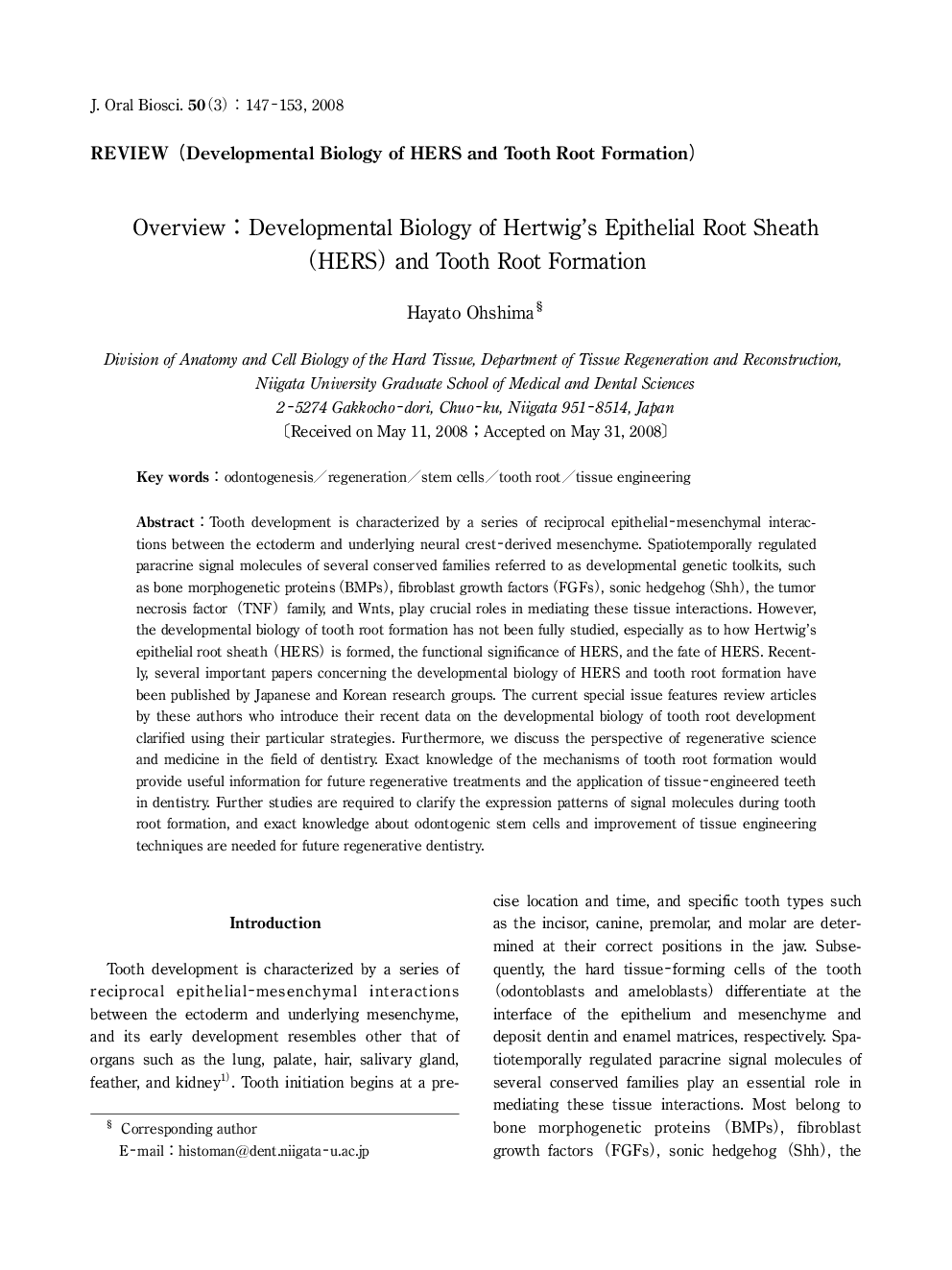| Article ID | Journal | Published Year | Pages | File Type |
|---|---|---|---|---|
| 2777034 | Journal of Oral Biosciences | 2008 | 7 Pages |
Tooth development is characterized by a series of reciprocal epithelial-mesenchymal interactions between the ectoderm and underlying neural crest-derived mesenchyme. Spatiotemporally regulated paracrine signal molecules of several conserved families referred to as developmental genetic toolkits, such as bone morphogenetic proteins (BMPs), fibroblast growth factors (FGFs), sonic hedgehog (Shh), the tumor necrosis factor (TNF) family, and Wnts, play crucial roles in mediating these tissue interactions. However, the developmental biology of tooth root formation has not been fully studied, especially as to how Hertwig's epithelial root sheath (HERS) is formed, the functional significance of HERS, and the fate of HERS. Recently, several important papers concerning the developmental biology of HERS and tooth root formation have been published by Japanese and Korean research groups. The current special issue features review articles by these authors who introduce their recent data on the developmental biology of tooth root development clarified using their particular strategies. Furthermore, we discuss the perspective of regenerative science and medicine in the field of dentistry. Exact knowledge of the mechanisms of tooth root formation would provide useful information for future regenerative treatments and the application of tissue-engineered teeth in dentistry. Further studies are required to clarify the expression patterns of signal molecules during tooth root formation, and exact knowledge about odontogenic stem cells and improvement of tissue engineering techniques are needed for future regenerative dentistry.
